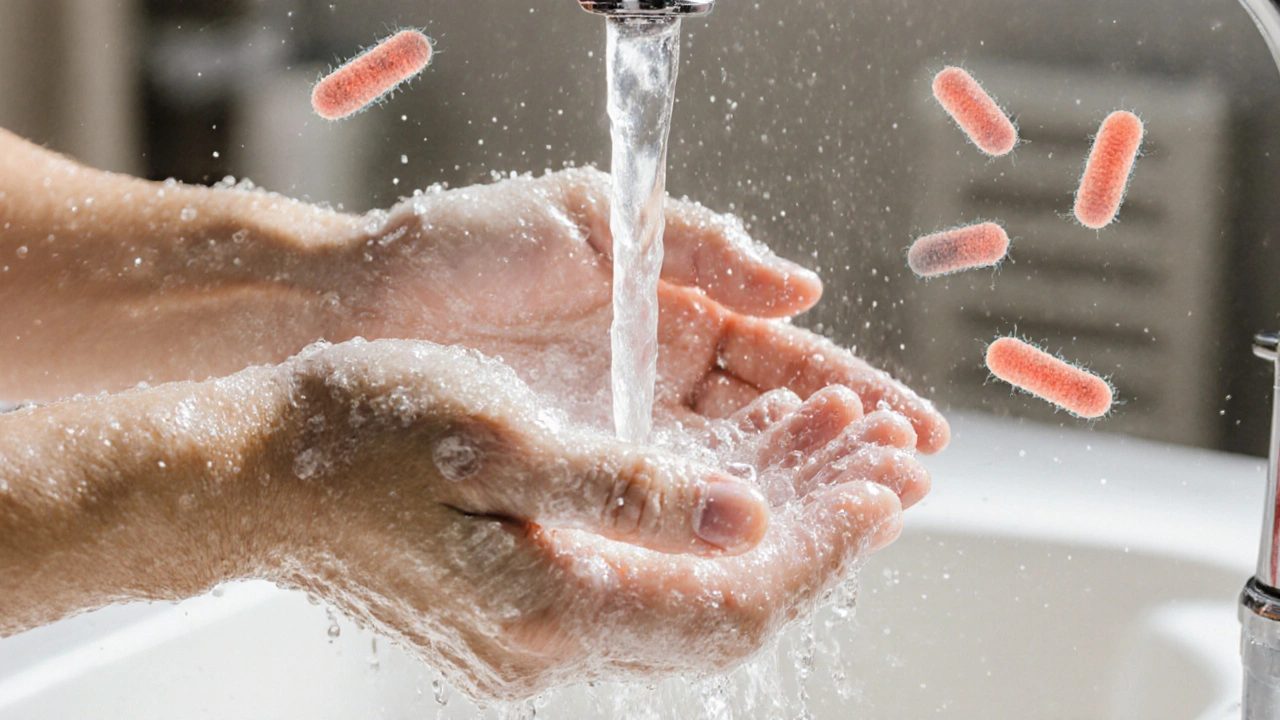Hand Washing: The Simple Habit That Saves Lives
When you think about staying healthy, hand washing, the act of cleaning your hands with water and soap to get rid of germs. Also known as hand hygiene, it is the first line of defense against everyday microbes. Hygiene, the set of habits that keep your body and surroundings clean relies heavily on this routine, because without clean hands you’re constantly re‑introducing pathogens to your face, food, and surfaces. That’s why infection prevention, the strategies used to stop disease‑causing organisms from spreading counts hand washing as a core practice: a quick wash removes viruses, bacteria, and fungi before they can settle in your nose, eyes, or mouth. The process also touches on skin health, the condition of the skin’s barrier and its ability to protect the body. When you use the right amount of gentle soap, you keep the protective acid mantle intact while still wiping out harmful microbes. Soap itself is a special molecule; its hydrophobic tail grabs onto oily residue and the hydrophilic head pulls it into the water, a tiny chemistry lesson that makes the whole routine more than just “getting wet.”
To get the most out of hand washing, follow the classic steps: wet, lather, scrub, rinse, and dry. Wetting with clean, running water opens pores, allowing soap, a surfactant that breaks down oils and traps germs to spread evenly. Lather for at least 20 seconds—think of singing “Happy Birthday” twice—so the surfactant can surround each microbe. Scrubbing all surfaces, especially fingertips, under nails, and between fingers, creates friction that physically dislodges particles. Rinsing removes the suspended germs, and drying with a clean towel or air dryer prevents re‑contamination. Skipping any of these steps cuts the effectiveness sharply; for instance, a quick rinse leaves most viruses untouched, while using too hot water can dry out the skin and compromise the barrier, making it easier for germs to cling later. In high‑risk settings like hospitals or food prep areas, adding an alcohol‑based hand rub after washing can give an extra kill‑step, but it should never replace thorough washing when hands are visibly dirty.
Understanding why each part matters helps you turn a routine into a habit that actually protects you and those around you. Below you’ll find a curated list of articles that dig deeper into specific angles—how hand washing ties into skin care, why it’s a key player in infection control, the best types of soap for different skin types, and practical tips for families, travelers, and healthcare workers. Browse the collection to see how a simple splash of water can become a powerful tool in your everyday health toolkit.How Proper Hand Washing Works and What to Watch For

How Personal Hygiene Stops Salmonella Infections
Learn how personal hygiene practices like hand washing, kitchen cleaning, and proper cooking can dramatically cut the risk of salmonella infection.
view more